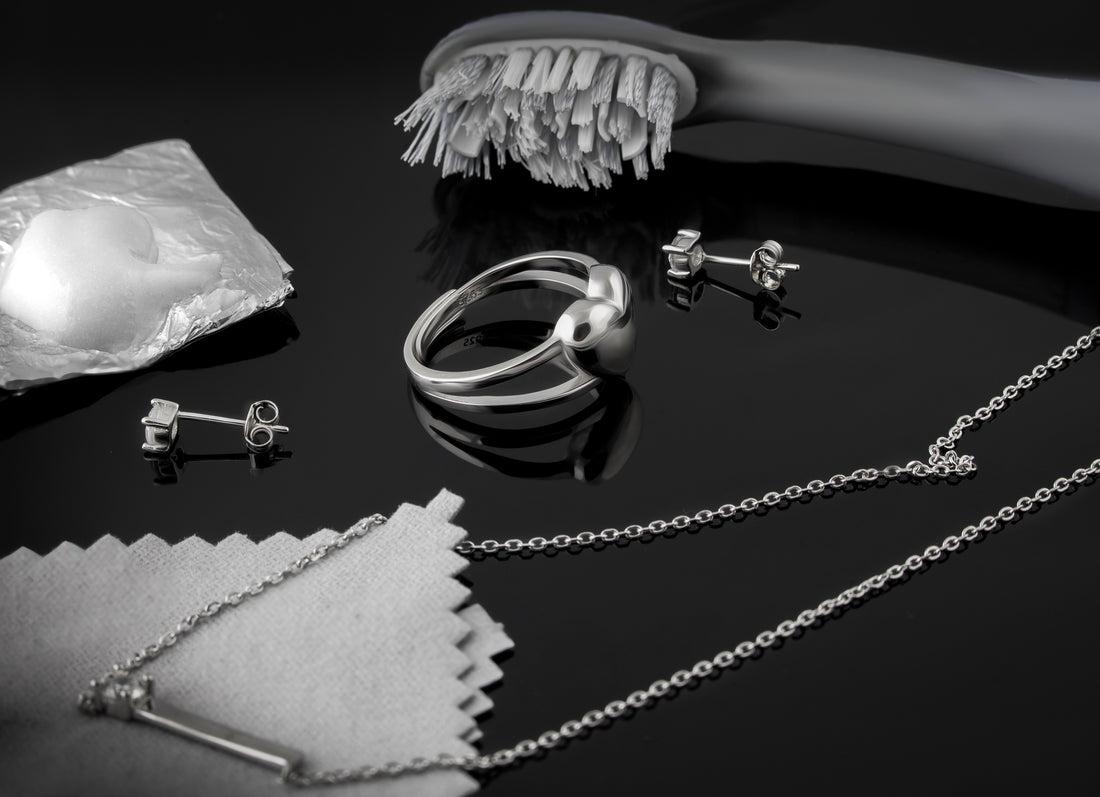Jewellers try to make sterling silver jewellery as resistant to wear and corrosion as possible, so that customers can enjoy wearing it without fear of blackening or turning green. Sterling silver is given an additional rhodium-plating treatment to ensure that it will retain its appearance for a long time to come. But even rhodium can fully protect your jewellery, so manufacturers always give advice on how to care for it properly. What can I do if I do not have the time or resources for professional cleaning? You can always turn to homemade methods.
Care of silver jewellery at home
Actually, taking care of your silver at home isn't that difficult. You may at first think that you need special care products, but you can always get by with what you can find in almost any shop.
There are several simple yet effective ways to clean your sterling silver piece. But first, it is always advisable to rinse it in a warm soapy solution. This can be made with any liquid soap, shower gel, shampoo or detergent. An important rule to always remember is never to scratch or scrape. Sure, rhodium is a hard coating, but its thickness is extremely small and it only protects against chemical corrosion, not mechanical damage. Therefore, rubbing the surface hard with hard abrasives will only damage the rhodium plating. We don't think anyone needs that. Therefore, always use soft cloths, e.g. suede cloths, when working with silver jewellery - they help to gently clean without scratching.
Sometimes a soapy solution is enough to wash away surface dirt from the sebum. But to deal with blackening, a little more effort is needed. All cleaning methods work more or less the same way, so you can choose any or combine them:
-
One of the easiest and most economical methods to clean blackened silver is with toothpaste. It is best to use a plain white toothpaste without colouring. Apply a little of it to the surface of the item and polish gently with the same chamois cloth, then rinse and dry. Again, no pressure should be applied to the cloth, as this could easily deform the jewellery. The main point is not mechanical polishing, but chemical polishing.
-
It is also possible to clean silver by replacing the toothpaste with ordinary baking soda, which should be mixed with the water to a pulp.
-
If ammonia is available at home, it can also be used to remove blackening from silver. Add 10ml (1 tablespoon) of ammonia to a glass of warm water and leave the jewellery to soak for 15 minutes, then rinse and dry as well.
-
The boiling method is often used. The solutions used can vary widely:

- Bring a glass of water and 20 g of baking soda to the boil, wrap ornaments in foil and soak for 15 minutes in boiling water;
- Boil 1 litre of water, 1 tbsp of baking soda and 2 eggshells and soak the jewellery for 15 minutes in the solution;
- Dip ornaments in an arbitrary amount of cola for 1-2 hours and then boil in the same cola for 15 minutes.
All these methods are safe for sterling silver and will not damage the rhodium plating. But if the jewellery has inlays of other metals or rare stones, you should be aware of this and use the homemade methods with caution.

